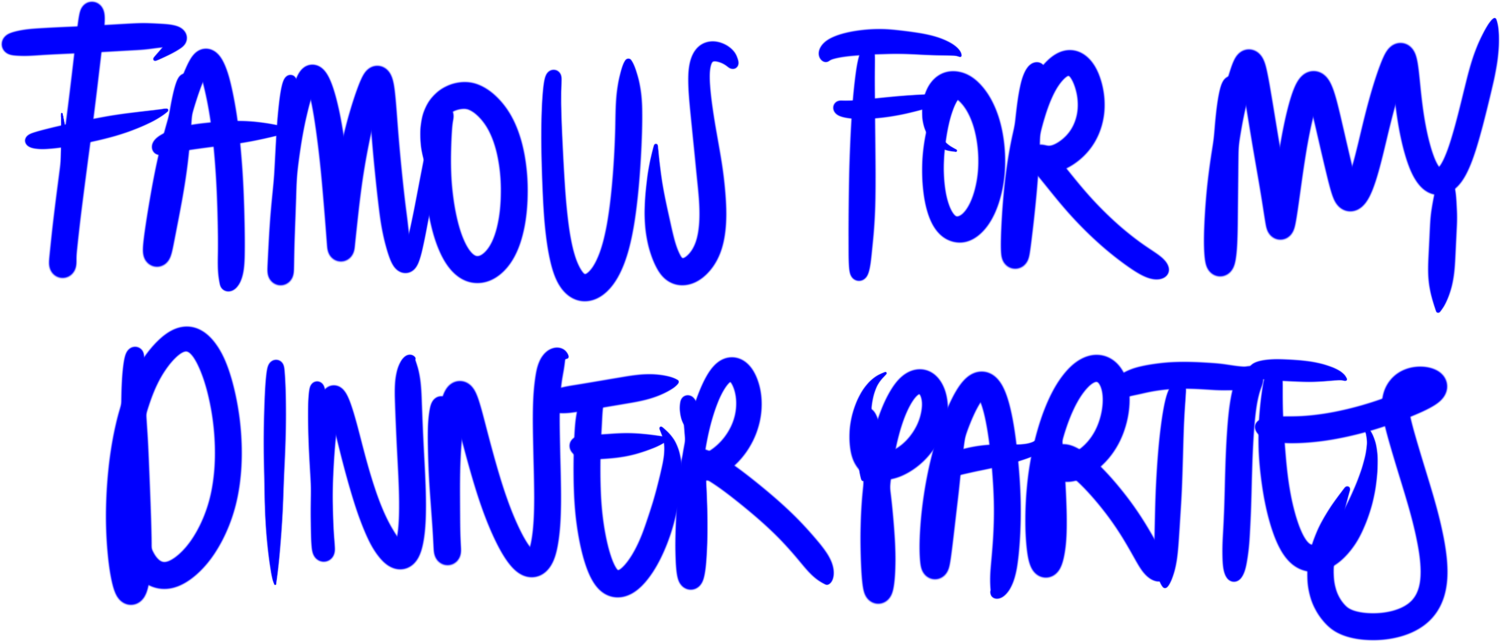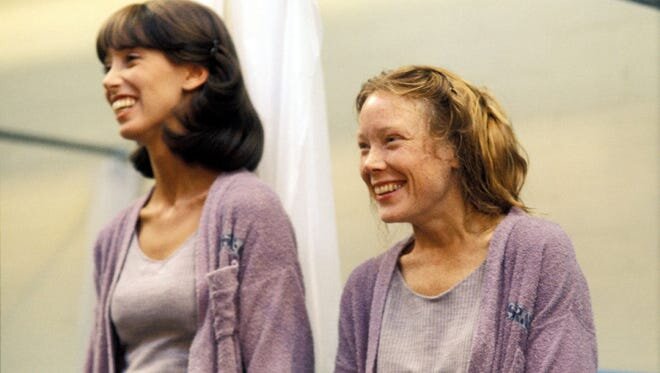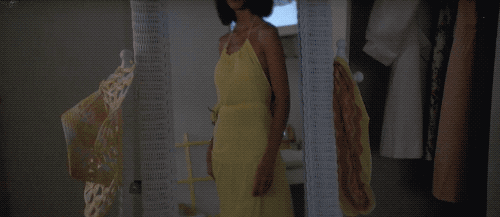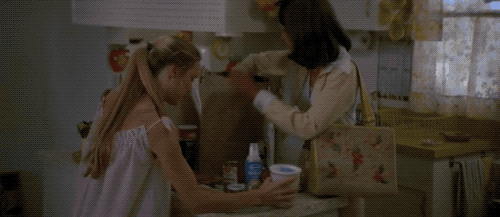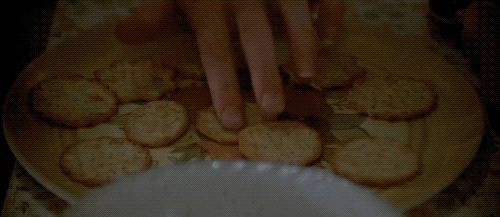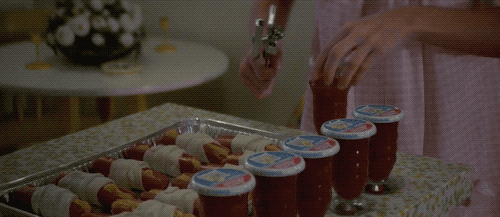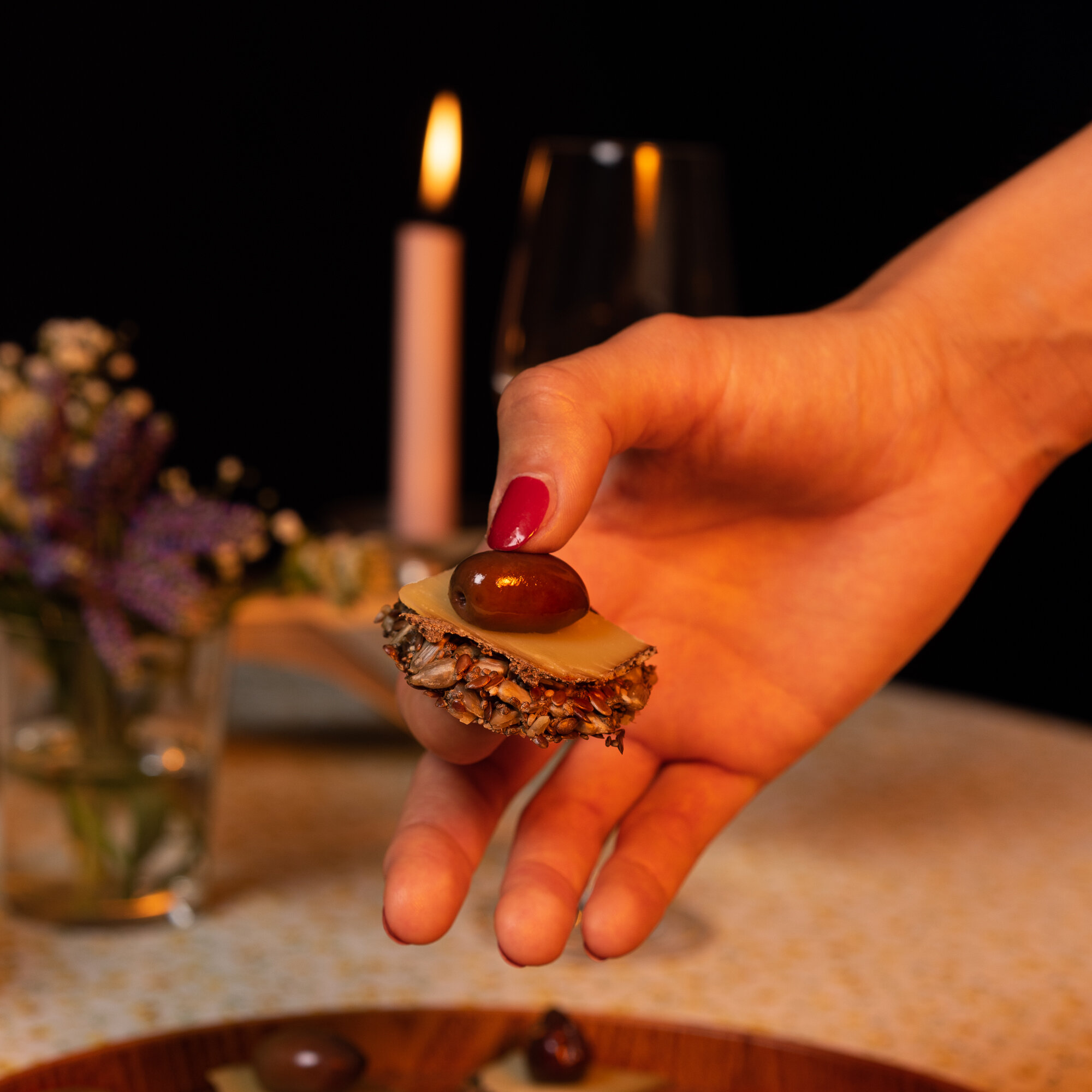3 WOMEN: A MATTER OF TASTE AND TIME
Shelly Duvall and Sissy Spacek as Millie and Pinky in 3 Women.
The last few decades have seen film taking a keen interest in food. Ratatouille comes to mind, or Julie and Julia: Films that revolve around food in one way or another. There are even more films, however, in which food is hardly one of the main characters, but still plays a big role in structuring its story — as it does in life, quite frankly. One of those films is Robert Altman's 1977 notoriously strange cult classic 3 Women. Centering around the relationship between two young female colleagues turned roommates and a third, older female painter that in many ways frames the relationship between the first two women, the film perfectly captures the doubt and insecurities of nineteen-seventies womanhood in America. In a sleepy desert town in California, Millie Lammoreaux, wonderfully played by Shelley Duvall, informs herself on her role as a woman through extensive magazine reading and closely following what is advertised to her. One of the funniest moments in the film shows Millie asking her new roommate Pinky, portrayed by Sissy Spacek, whether she takes the pill, before informing her that she, herself, does so — however only when she knows she's gonna do something, “cause you can get a bad reaction.” Millie, as she tries to stay on top of every trend and becomes a hollow shell of a person in the process, is ironically referred to by her co-workers as “thoroughly modern Millie”. The film is jam-packed with Millie's cringe-worthy monologues, speaking to non-attentive audiences about topics ranging from hula dancing (“I think it's sexy!”), to refurbishing old sofas and her favourite bar, Dodge City (“You'll like it, it's air-conditioned.”) These monologues, as well as Millie's diary entrances, were famously written by Duvall herself, lending a degree of authenticity which, as Altman notes, he couldn't have brought to it himself.
“Millie is the most uninteresting person in any room she enters, yet brings along a kind of inexplicable cockiness that can only be understood in light of her knowing that she exactly does everything she is supposed to do.”
In speaking and writing about these topics, Millie sets the scene of all things ‘good’ in the mid-seventies Western world, from exotic dance crazes to games of Scrabble and ideas for home decoration. The film shows what a life set to the beat of popular culture might look like, and brings to light to what extent visions of womanhood are susceptible to those spread by the media. Millie is the most uninteresting person in any room she enters, yet brings along a kind of inexplicable cockiness that can only be understood in light of her knowing that she exactly does ‘everything she is supposed to do’. One field of life in which Millie is able to showcase this is food preparation and hosting. This is a world before ultra-processed foods were shunned — at least by some of those affluent enough to do so —, when microwaves were still referred to as microwave ovens and considered to be the epiphany of modernity. In one of the film's early scenes, Millie is seen bragging to colleagues about the book she keeps (“it's more like a file”), ordering recipes by how long they take to prepare. One of these recipes, which she later cooks for her new roommate Pinky, is for tuna melts. She explains to Pinky how to make it, describing the chopping of onions and celery, before admitting to having opted for onion powder and celery salt for lack of their fresh equivalents — added to canned tuna and store-bought mayonnaise. In another scene, Millie tries to convince some doctors she fancies to come over for dinner, luring them with the promise of ‘penthouse chicken’, a recipe she has been meaning to try: “It takes a whole hour to cook, but believe me, it's worth it.” This particular recipe made the cover of a cult classic little cookbook called Cooking with Soup, first published by the Campbell's Soup Corporation in 1963, that had reissues throughout the nineteen-seventies. (Click here for the recipe) Seemingly owing more of her recipes to ‘big food corp’ she also promises the boys that she can give them “a whole bunch of recipes made with Rice Krispies.”
Setting the table
Then, halfway through the film, Millie finally — almost — throws a dinner party. This party proves to be a pivotal moment, causing the women to get into a fight, which in turn leads to a series of events that dramatically changes the dynamic between Millie and Pinky. Before any of that, however, Millie lets Pinky know that she’s in for a treat: “I’m famous for my dinner parties”, she exclaims, while trying on one of her many yellow dresses in front of a mirror. The menu is out of this world. There is canned cheese on store-bought crackers with an olive on top. There is store-bought chocolate pudding in store-bought pastry shells topped with canned whipped cream. There are individual shrimp cocktails that only need their lids taken off. And of course there is that infamous classic: pigs in a blanket. Millie is seen standing on the terrace obsessing over the table setting and when Pinky spills a shrimp cocktail in a clumsy attempt to open it, Millie needs to return to the shop to make sure the table will be even.
“One only has to flick through a couple of nineteen-seventies magazines to be overwhelmed by the sheer amount of orange and brown shining off the glossy pages.”
Retro food and new media
In 2020, foods like these would have been long forgotten, if it weren't for people like Anna Pallai, a British woman who has dedicated a part of her life to updating her Instagram account 70s dinner party with pictures of exactly this kind of food: meats and vegetables set in aspic, covered with hard-boiled eggs and olives. Seeing this food on Instagram, the quintessential modern medium, which hosts an enormous amount of photos of food that almost all fall into the categories of brunch dishes like eggs Benedict and avocado toast, or health foods like exotic fruit bowls and kale salads, is refreshing. In an article written for The Guardian, Pallai writes about the food of the nineteen-seventies:
It was a time of meals that didn't just taste out of this world, they looked out of this world, too. In the current climate of clean-eating, social media fascism, the 70s seem to signify a happier, more honest time. We want something that has the balls to be shamelessly, completely and proudly crap. We want a good, old-fashioned 70s dinner party.
Interestingly, in a time in which most fashion trends are informed by times passed, food seems to be largely resistant to this kind of retro treatment, and if done at all, it's hardly ever without a high degree of irony. Even Pallai herself seems to fall into that category: While recognising the importance of such foods amidst what she refers to as a kind of modern food ‘fascism’, she still considers the type of food she posts about to be crap. This raises some interesting questions. As of late, the kind of worldwide style uniformity that seems to be on the rise in the way our fashion trends are informed, as well as in the way our ‘hipster’ cafés and the food we eat look and taste, has been largely considered to be a typically twenty-first century phenomenon — only made possible by the wonders of the Internet, and, more specifically, by social media platforms such as Instagram and Pinterest. While this might be true to some extent, one only has to flick through a couple of nineteen-seventies magazines to be overwhelmed by the sheer amount of orange and brown shining off the glossy pages. The same goes for the food presented in seventies cookbooks, regardless of the part of the Western world these were published in. Family photo albums from these times then go on to show that older media like magazines and television were probably no less successful in conveying the ‘right’ and ‘wrong’ of lifestyle choices to the public than the social media of today — as does Millie in 3 Women.
A new light on old food
So what was it then? Were the seventies a decade, not so long ago, in which we all somehow blindly fell in love with bad food? Or a decade in which our grandmas collectively decided that it would be fun to present the dinner table with foods “shamelessly, completely and proudly crap”? More likely than a state of collective madness seems to be the idea that food just isn’t intrinsically bad or good. There was a time, believe it or not, in which sardine stuffed lemons were delicious, just like ‘milk chicken’ topped with bananas. And so, realising that matters of taste have always been subject to historical, cultural and geographic factors, it can be interesting to revisit some of these foods, not as the butt of the joke, but by actually taking them serious in their social and historical relevance.
“More likely than a state of collective madness seems to be the idea that food just isn’t intrinsically bad or good.”
Although questions of flavour and taste leave no room for black and white value judgments, things can be said about the food of the nineteen-seventies. People really seemed to have fun with it and were willing to experiment, in doing so creating some of the wildest looking dishes and combining the boldest of flavours. However, there are clear downsides, too. Modern-day concerns for the health benefits of eating less ultra-processed food should not be seen as the pinnacle of elitism, and leaving behind certain foods out of health or climate related reasons is legitimate and understandable. So while there is nothing intrinsically wrong with the food cooked by Millie, the problem for some might be that the word ‘cooked’ hardly applies. But what about rich and creamy home-made chocolate pudding, served in a delicious short-crust pastry shell with freshly whipped cream? Beautifully roasted shrimp in an elegant glass dish with butter lettuce and silky whisky sauce? A crispy cracker topped with fresh cheese and gorgeous Kalamata olives? While the tempo of modern life might not allow for these dishes on any given Tuesday night, a dinner party is, after all, a party: something special. I would be happy to be invited to a serving of any these dishes.
Text: Yannic Moeken
Photography: Junshen Wu
Production: Sandra von Mayer-Myrtenhain
Food Styling: Yannic Moeken
Model: Maja Gach
Special Thanks: Westberlin Coffeebar and Mediashop

